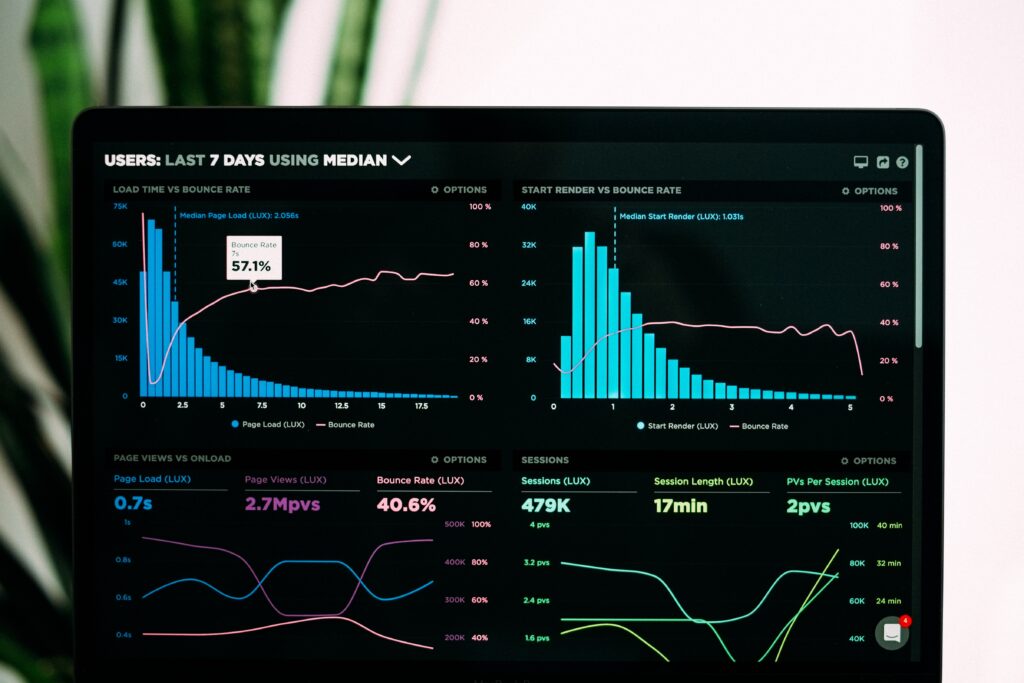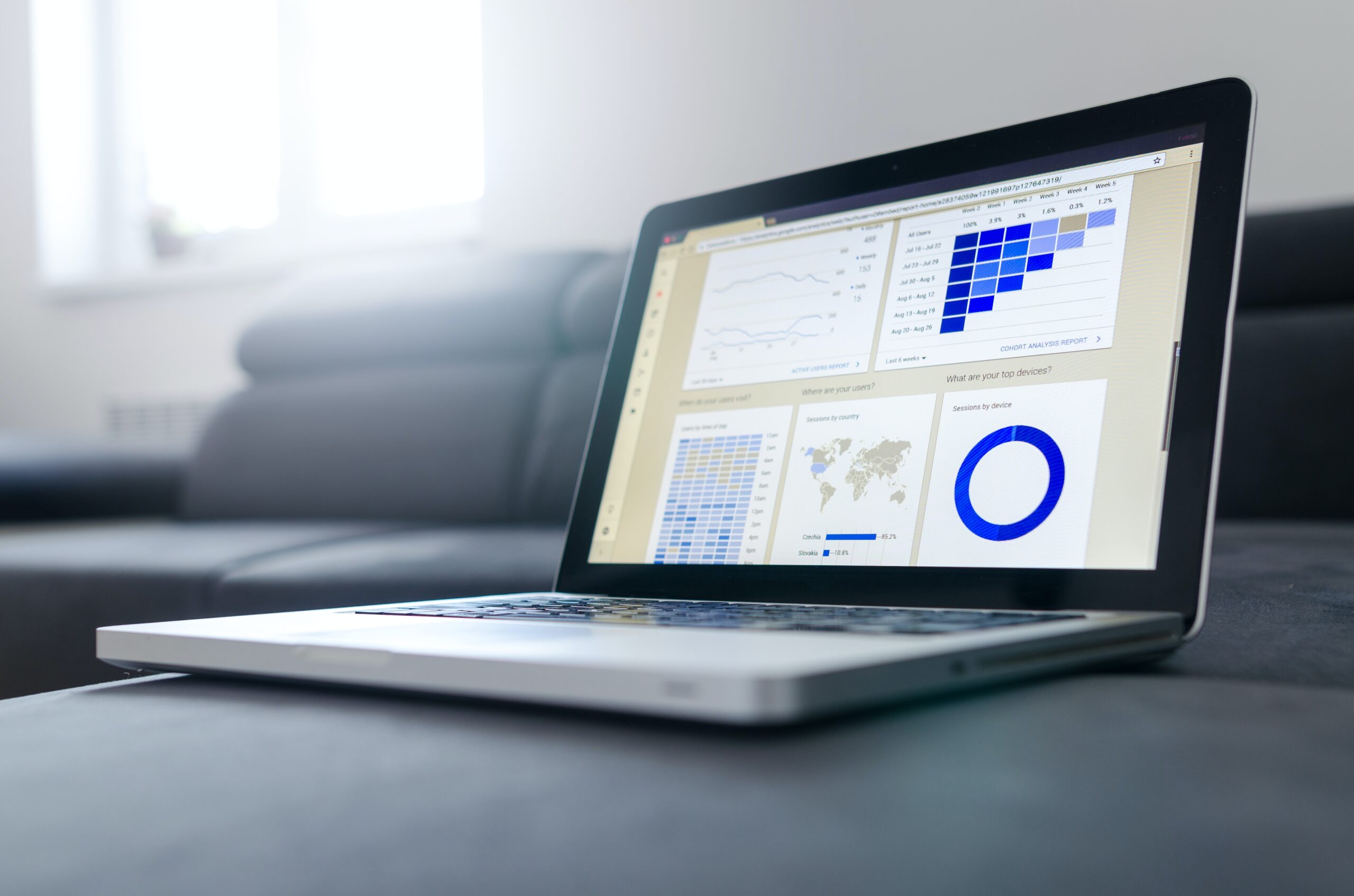In this article, you will learn all about data acquisition and its importance in various fields. We will explore the definition of data acquisition, its process, and the different methods used to collect data. Additionally, we will discuss the applications of data acquisition in industries such as science, engineering, and healthcare. So, whether you’re new to the concept or looking to expand your knowledge, this article will provide you with a comprehensive understanding of data acquisition.

Understanding Data Acquisition
Data acquisition refers to the process of collecting and recording data from various sources for further analysis and interpretation. It involves the use of specialized equipment and techniques to capture information from sensors, instruments, and other devices. The acquired data is then converted into a digital format and stored for processing and analysis. In this article, we will explore the definition, importance, goals, and various types of data acquisition, as well as its components, process, applications, challenges, and recent advancements.
Definition of Data Acquisition
Data acquisition, also known as DAQ, is the process of capturing and recording real-world data into a digital format for analysis and interpretation. It involves the use of specialized hardware and software to collect information from physical or electronic sources. This data can be in the form of analog signals, such as temperature, pressure, or voltage, or digital signals, such as binary values or pulses. The captured data is then converted into a digital representation and stored for further processing.
Importance of Data Acquisition
Data acquisition plays a crucial role in various fields and industries. It enables the collection of valuable information that can be used for analysis, decision-making, and improvement. By acquiring and analyzing data, organizations can gain insights into their operations, identify trends and patterns, monitor performance, and make informed decisions. Without data acquisition, it would be challenging to measure, record, and analyze data effectively, hindering progress and innovation.
Goals of Data Acquisition
The primary goals of data acquisition can be summarized as follows:
-
Accurate Measurement: Data acquisition aims to accurately measure and record physical or electronic signals from various sources. This ensures that the collected data is reliable and can be used for analysis and decision-making.
-
High Sampling Rate: Data acquisition systems strive to achieve a high sampling rate, which refers to the number of data points captured per second. A higher sampling rate allows for better resolution and accuracy in capturing time-dependent signals.
-
Optimal Signal Conversion: Data acquisition involves converting analog signals into digital format for processing and analysis. The goal is to ensure a seamless and accurate conversion, minimizing errors and signal degradation.
-
Efficient Data Processing: Data acquisition systems aim to efficiently process the acquired data, ensuring that it can be analyzed and interpreted in a timely manner. This involves appropriate data storage, retrieval, and manipulation techniques.
Types of Data Acquisition
There are different types of data acquisition systems, each designed to handle specific types of signals and applications. The main types include analog data acquisition, digital data acquisition, and mixed-signal data acquisition.
Analog Data Acquisition
Analog data acquisition systems are used to capture and record analog signals, such as temperature, pressure, voltage, or current. These systems typically consist of sensors, signal conditioning circuits, analog-to-digital converters (ADCs), and data storage components. Analog data acquisition is commonly used in fields such as industrial automation, scientific research, and environmental monitoring.
Digital Data Acquisition
Digital data acquisition systems are used to capture and record digital signals, such as binary values or pulses. These systems typically consist of digital input/output (I/O) modules, which can directly interface with digital devices and sensors. Digital data acquisition is commonly used in applications that involve monitoring and controlling digital processes or equipment.
Mixed-Signal Data Acquisition
Mixed-signal data acquisition systems are designed to handle both analog and digital signals. These systems incorporate both analog and digital input/output modules, allowing for the simultaneous capture and recording of different types of signals. Mixed-signal data acquisition is particularly useful in applications that require the synchronization and integration of analog and digital data, such as medical diagnostics and quality control.

Components of Data Acquisition Systems
Data acquisition systems consist of various components that work together to capture, convert, store, and process data. The main components include sensors, signal conditioning circuits, analog-to-digital converters (ADCs), and data storage components.
Sensors
Sensors are devices that convert physical or environmental parameters into electrical signals. They measure various physical quantities, such as temperature, pressure, humidity, motion, or light intensity, and generate corresponding electrical signals. Sensors are an essential component of data acquisition systems, as they provide the input data necessary for measurement and analysis.
Signal Conditioning
Signal conditioning involves the modification and preparation of the acquired signals for further processing. It typically includes amplification, filtering, and linearization of signals to improve their quality and compatibility with the data acquisition system. Signal conditioning circuits ensure that the acquired signals are accurate, reliable, and suitable for conversion and analysis.
Analog-to-Digital Converter (ADC)
Analog-to-digital converters (ADCs) are used to convert analog signals into a digital format. They measure the amplitude of the analog signal at regular intervals and assign a corresponding digital value to each measurement. ADCs play a crucial role in data acquisition systems, as they enable the conversion of analog signals into a digital representation that can be stored, processed, and analyzed.
Data Storage
Data storage components, such as hard drives or solid-state drives, are used to store the acquired data for further analysis and interpretation. The storage capacity of data acquisition systems can vary depending on the application and requirements. Additionally, data storage components may include backup or archival systems to ensure data integrity and availability.
Data Acquisition Process
The data acquisition process involves several key steps, including signal measurement, sampling, signal conversion, and data processing. Let’s explore each step in detail.
Signal Measurement
The first step in the data acquisition process is to measure the desired physical or electronic signals using sensors. Sensors are carefully selected and calibrated to accurately measure the specific parameters of interest. The measured signals are then amplified and conditioned for further processing.
Sampling
Sampling refers to the process of capturing the measured signals at regular intervals. Sampling rate, measured in samples per second (SPS) or hertz (Hz), determines the number of samples taken per second. A higher sampling rate allows for better resolution and accuracy in capturing time-dependent signals.
Signal Conversion
The captured analog signals are converted into a digital format using analog-to-digital converters (ADCs). ADCs measure the amplitude of the analog signal at each sample and assign a corresponding digital value. The digital representation allows for easier storage, processing, and analysis of the acquired data.
Data Processing
Data processing involves the manipulation, analysis, and interpretation of the acquired data. This can include filtering, noise removal, signal enhancement, statistical analysis, or visualization. Data processing techniques aim to extract meaningful insights, patterns, or trends from the acquired data.

Applications of Data Acquisition
Data acquisition has numerous applications in various fields and industries. Some of the key applications include:
Industrial Automation
Data acquisition is extensively used in industrial automation to monitor and control manufacturing processes. It enables real-time data collection, analysis, and decision-making, leading to improved productivity, efficiency, and quality.
Scientific Research
Data acquisition plays a vital role in scientific research, allowing researchers to collect and analyze data in various scientific disciplines. It enables the measurement and monitoring of physical parameters, helping researchers better understand natural phenomena and conduct experiments.
Environmental Monitoring
Data acquisition is utilized in environmental monitoring to measure and analyze various parameters, such as air quality, water quality, temperature, humidity, or pollution levels. It helps in assessing environmental conditions, identifying trends, and making informed decisions for sustainable development.
Medical Diagnosis
Data acquisition is crucial in medical diagnosis, enabling the acquisition and analysis of physiological signals, such as electrocardiograms (ECG), electroencephalograms (EEG), or blood pressure. It helps in diagnosing diseases, monitoring patient health, and guiding treatment decisions.
Quality Control
Data acquisition is employed in quality control processes to monitor and analyze product quality, performance, or reliability. It helps in detecting defects, identifying trends, and improving production processes to ensure consistent quality standards.
Challenges in Data Acquisition
While data acquisition offers numerous benefits, it also presents certain challenges that need to be addressed. Some of the challenges include:
Data Accuracy
Ensuring the accuracy of acquired data is of utmost importance. Factors such as sensor calibration, signal quality, and measurement errors can impact the accuracy of the acquired data. Proper calibration, signal conditioning, and error correction techniques are required to minimize inaccuracies.
Signal Noise and Interference
Signal noise and interference can degrade the quality of acquired data, affecting the accuracy and reliability of measurements. Techniques such as shielding, grounding, filtering, and signal conditioning are employed to reduce noise and interference, ensuring clean and reliable data acquisition.
Data Security
With the increasing importance of data, ensuring data security and privacy is essential. Data acquisition systems need to implement appropriate security measures, such as encryption, access controls, and data anonymization, to protect sensitive information from unauthorized access and breaches.
Recent Advancements in Data Acquisition
Data acquisition has witnessed significant advancements in recent years, driven by advancements in technology and increased data availability. Some of the recent advancements include:
Wireless Data Acquisition
Wireless data acquisition systems have gained popularity due to their flexibility and convenience. These systems eliminate the need for wired connections, allowing for remote monitoring and data collection. Wireless technologies, such as Wi-Fi, Bluetooth, or cellular networks, enable seamless connectivity and data transmission.
Internet of Things (IoT) Integration
The integration of data acquisition systems with the Internet of Things (IoT) enables real-time monitoring, analysis, and control of remote devices or processes. IoT-enabled data acquisition systems facilitate seamless connectivity and interoperability, enabling efficient data collection and analysis across various devices and platforms.
Big Data Analytics
The advent of big data analytics has revolutionized data acquisition, enabling the processing and analysis of large and complex datasets. Advanced analytics techniques, such as machine learning, artificial intelligence, or data mining, help in uncovering hidden patterns, correlations, or insights from vast amounts of acquired data.
Conclusion
In conclusion, data acquisition is a fundamental process that enables the collection and recording of data for analysis and interpretation. It plays a crucial role in various fields and industries, including industrial automation, scientific research, environmental monitoring, medical diagnosis, and quality control. By understanding the definition, importance, goals, types, components, process, applications, challenges, and recent advancements in data acquisition, you can appreciate its significance in generating valuable insights and driving innovation. As technology continues to advance, data acquisition will continue to evolve, further enhancing our ability to acquire, analyze, and leverage data for improved decision-making and problem-solving.

